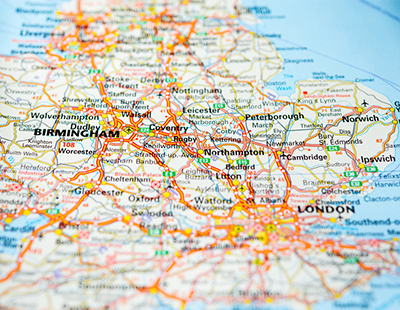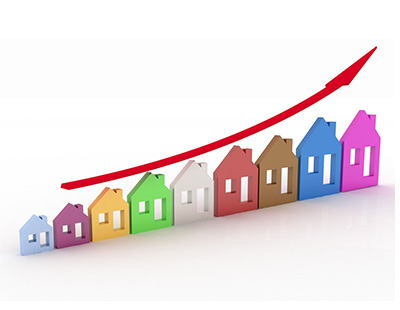Birmingham, Leicester, Nottingham, Sheffield and Glasgow are among the cities that have seen house price inflation slow in the 12 months to July 2019.
Weak property price growth and continued growth in average earnings mean housing affordability is starting to improve across the highest value markets where affordability levels have been most stretched. This trend has accelerated as areas register localised price falls and earnings growth, which is u 3.7% year-on-year, accelerates, according to the Office for National Statistics.
Property prices unsurprisingly remain most expensive in London, where the average price now stands at £483,100, which is 13.1x the average Londoner’s earnings - a return to levels last seen in June 2015. This is down from a high of 14.1x in June 2017.
But despite this modest improvement, the London ratio today remains well ahead of the 20-year house price to earnings ratio average at 9.9x.
In other expensive cities, Cambridge and Oxford, where house prices now sit at 12.2x and 11.9x average earnings respectively, there has been a similar improvement, with affordability levels back to those seen in mid-2015.
The southern cities of Bournemouth, Southampton, Portsmouth and Bristol, which have the next highest affordability ratios of 7.5x to 9.7x, have recorded a small decrease in the house price to earnings ratio since 2016 as price growth has dropped below the growth in average earnings.
Across the UK, the average house price to earnings ratio is 6.7.
|
City
|
Current price - July 2019
|
%yoy
Jul-19
|
Average annual earnings - single earner
|
Price to earnings ratio 2019 Q2
|
|
London
|
£483,100
|
0%
|
£37,100
|
13.1
|
|
Cambridge
|
£427,900
|
0%
|
£34,900
|
12.2
|
|
Oxford
|
£405,600
|
0%
|
£33,900
|
11.9
|
|
Bournemouth
|
£293,100
|
1%
|
£30,000
|
9.7
|
|
Bristol
|
£280,300
|
1%
|
£30,500
|
9.2
|
|
Portsmouth
|
£238,200
|
1%
|
£30,400
|
7.9
|
|
Southampton
|
£228,500
|
1%
|
£30,500
|
7.5
|
|
UK
|
£220,500
|
2%
|
£33,000
|
6.7
|
Richard Donnell, research and insight director at Zoopla, commented: “Housing affordability is slowly starting to improve in London as earnings growth outstrips house price inflation.
“There has been a clear downward trend in the ratio of house prices to average earnings over the last two years. However, the scale of improvement is relatively modest.
“While welcome news, the gap between earnings and prices needs to close further in order to make a material difference to would-be purchasers. The changing picture is not limited to London. There are 12 cities where the annual growth in house prices is below the growth in average earnings which is running at 3.7%.
“Lower-priced cities in northern England are actually getting less affordable than their southern counterparts when you consider that the annual percentage growth in house prices is outstripping earnings growth.”

When looking at the last peak in the housing market cycle in 2007, to provide a benchmark for today’s house price to earnings ratios, there are eight cities where the current ratio of house price to earnings is higher than in 2007 (meaning they are now less affordable) with the greatest differentials in Oxford, Cambridge and London.
Higher value cities across southern England are also above the 2007 house price to earnings ratio level (Bristol, Portsmouth, Southampton) but to a lesser degree. Other cities are close to the 2007 level, or well below, as is the case in the northern England and Scottish cities: Newcastle, Glasgow, Aberdeen and Liverpool.
Donnell added: “Although the likes of London, Oxford, Cambridge are at their most affordable levels in four years, the price to earnings ratio remains well ahead of the 20-year average.
“Some cities to the north of England and Scotland are more affordable now when compared to 2007 but, with more scope for future house price growth, the price to earnings ratio is set to rise slowly in the coming years.”

The property market in Birmingham, which was the fastest growing city for house prices across much of 2018, has seen the annual rate of growth slow to 3.5%, half the rate of 7.2% recorded in July 2017.
Market dynamics have shifted and weaker demand is failing to keep pace with rising supply and the city is now ranked 9th for annual house price growth.
Donnell continued: “Birmingham was the fastest growing city across much of 2017 and has since dropped down the annual house price growth rankings. The supply of homes for sale is rising faster than sales agreed as levels of market activity slow and this is reducing the upward pressure on house prices.”
Whilst London is the most expensive city at £483,100, house price inflation remains unchanged. The cities ranking is once more divided between those cities in the north of the country and Scotland and then the southern cities and Aberdeen, the latter cohort experiencing the lowest levels of, or even negative, house price growth.
Edinburgh and Liverpool are clear front-runners, each experiencing annual house price growth of 5.8% to £236,900 and £125,500 respectively. Liverpool has seen prices rise rapidly off a low base and this time last year house prices were rising by 3.8% annually.
Only two cities are seeing annual house price falls for July 2019: Aberdeen (fall of 4.8% to £160,100) and Oxford (fall of 0.4% to £405,600).
Donnell concluded: “The affordability of housing varies widely across the UK from a high of 13x in London to a low of 3.7x in Glasgow. This reflects the huge variation in house price growth over the last decade and the relative strength of demand and availability of housing supply across UK cities.
“In cities with attractive affordability there is room for further house price growth so long as mortgage rates remain low and the economy continues to grow and create jobs. However, house price growth levels are slowing down and this is likely to build into the autumn until there is greater clarity over the Brexit process and its implications on the economy.”
Want to comment on this story? If so...if any post is considered to victimise, harass, degrade or intimidate an individual or group of individuals on any basis, then the post may be deleted and the individual immediately banned from posting in future.





.jpg)










.png)






Join the conversation
Be the first to comment (please use the comment box below)
Please login to comment